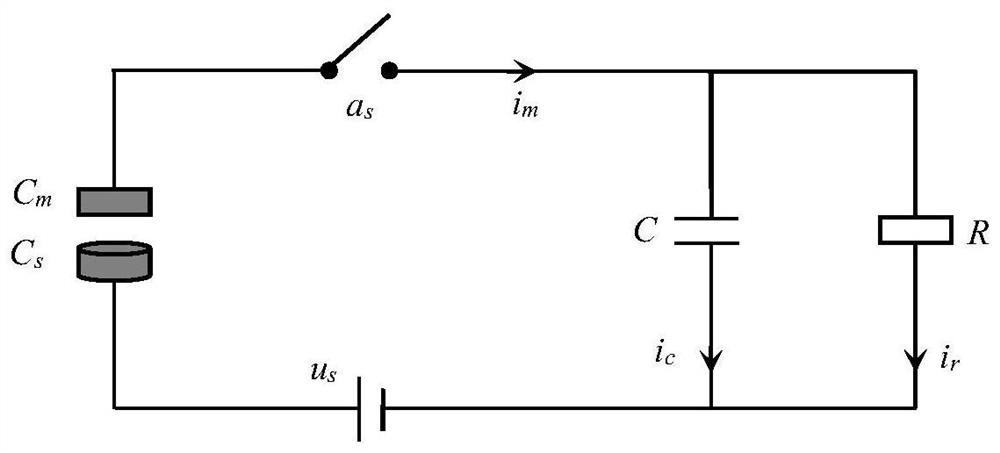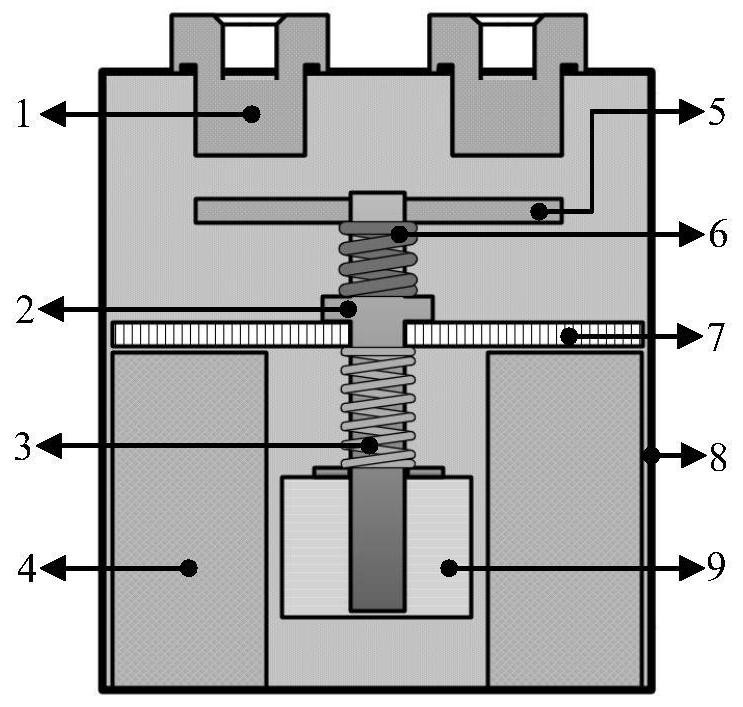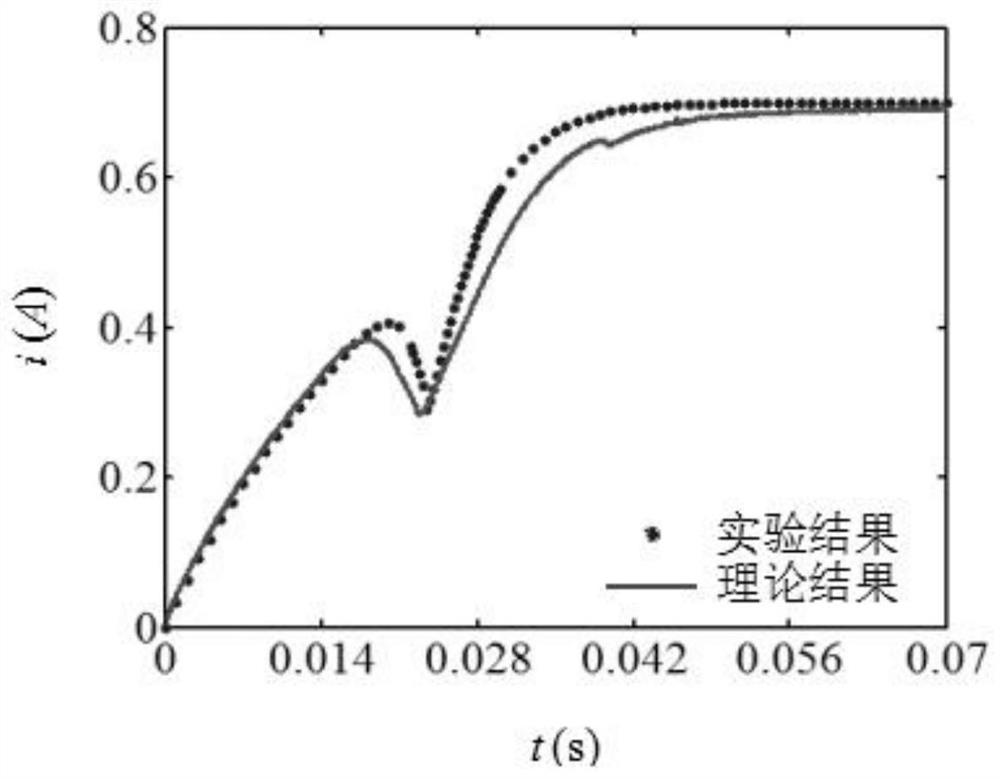Calculation method of mechanical characteristics of electromagnetic relay closing bounce electrical contact under capacitive load
A technology of electromagnetic relay and mechanical characteristics, applied in the direction of instrumentation, design optimization/simulation, electrical digital data processing, etc., can solve the problems of time-consuming, complicated experimental research structure design of electromagnetic relay contact characteristics, and inability to clearly reveal the mechanism of contact bounce, etc. Achieve the effect of saving time
- Summary
- Abstract
- Description
- Claims
- Application Information
AI Technical Summary
Problems solved by technology
Method used
Image
Examples
Embodiment
[0115] 1. Calculation example
[0116] The structure diagram of the electromagnetic relay is as follows figure 2 shown. Relay related parameters are: M1 =12.9g, M 2 =7g,k 1 =0.37N / mm,k 2 =13N / mm,y x =2.68mm,y d =1.7mm,F f =6N,F c =7N,k=5.3×10 5 N / mm,k c =1N / (mm / s), n=1.5, δ=0.1mm. The circuit and electrical contact parameters are: I=0.7A, N=2100, S=430mm 2 ; u s =1V, C=220μF, R=22Ω, R r =0.32mΩ,μ 0 =4π×10 –10 H / mm, ξ=0.45, H=91N / mm 2 , R 1 =5.5mm and P=10N.
[0117] 2. Calculation process
[0118] (1) Based on the establishment steps of the mathematical model of the electromagnetic force, the mathematical model of the electromagnetic force of the electromagnetic relay is completed.
[0119] (2) According to the establishment steps of the mathematical model of the contact force, the mathematical model of the contact force of the electromagnetic relay is completed.
[0120] (3) The mathematical model of electric repulsion is used to establish the mathematical...
PUM
 Login to View More
Login to View More Abstract
Description
Claims
Application Information
 Login to View More
Login to View More - R&D
- Intellectual Property
- Life Sciences
- Materials
- Tech Scout
- Unparalleled Data Quality
- Higher Quality Content
- 60% Fewer Hallucinations
Browse by: Latest US Patents, China's latest patents, Technical Efficacy Thesaurus, Application Domain, Technology Topic, Popular Technical Reports.
© 2025 PatSnap. All rights reserved.Legal|Privacy policy|Modern Slavery Act Transparency Statement|Sitemap|About US| Contact US: help@patsnap.com



